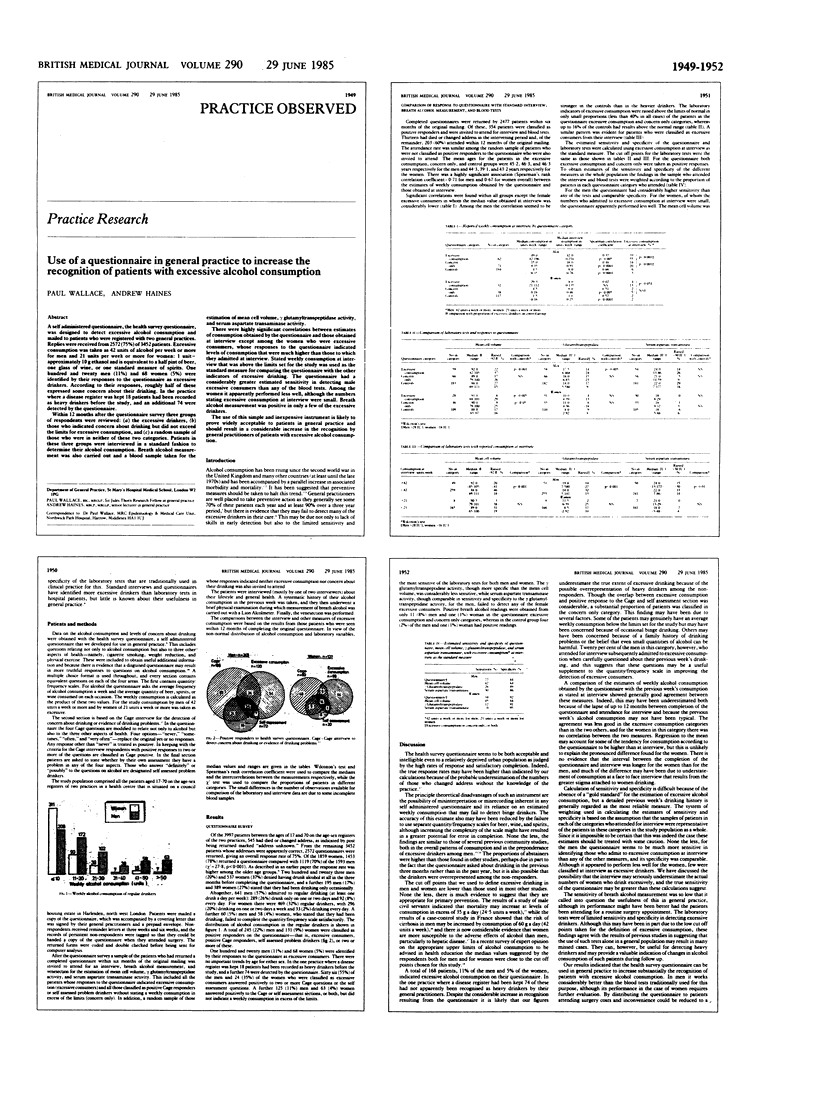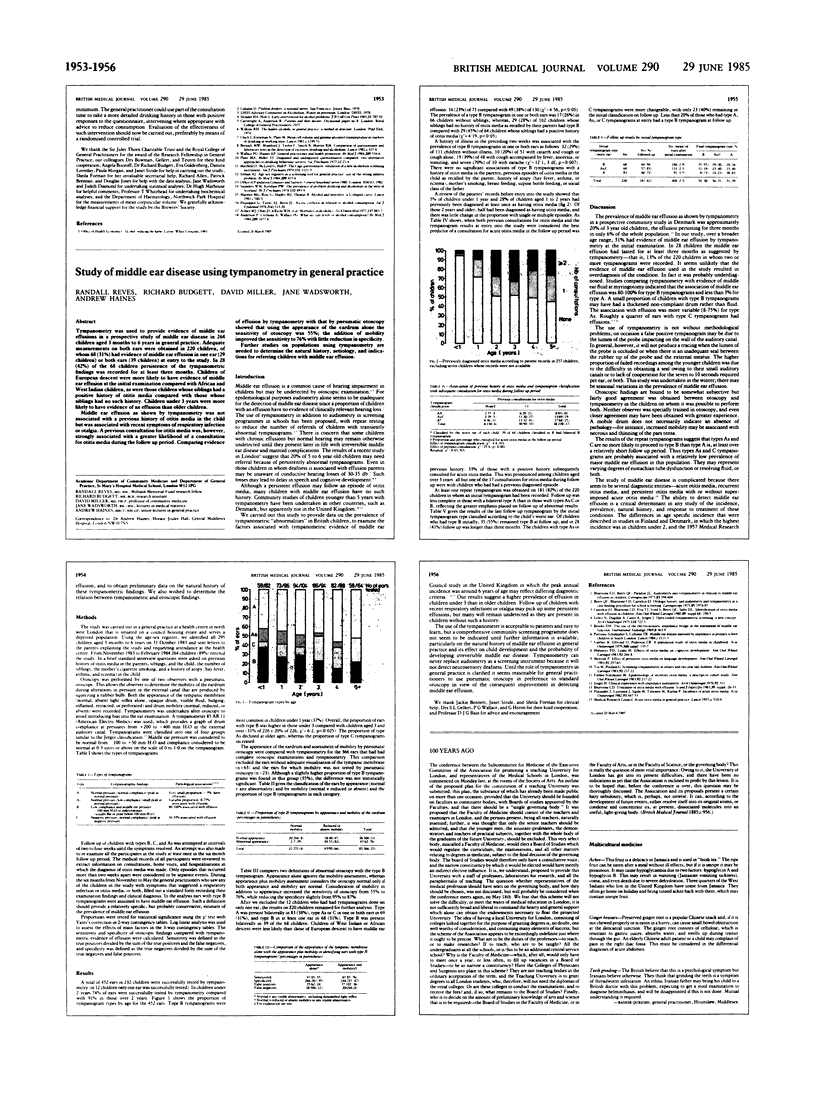Abstract
A self administered questionnaire, the health survey questionnaire, was designed to detect excessive alcohol consumption and mailed to patients who were registered with two general practices. Replies were received from 2572(75%) of 3452 patients. Excessive consumption was taken as 42 units of alcohol per week or more for men and 21 units per week or more for women: 1 unit = approximately 10 g ethanol and is equivalent to a half pint of beer, one glass of wine, or one standard measure of spirits. One hundred and twenty men (11%) and 68 women (5%) were identified by their responses to the questionnaire as excessive drinkers. According to their responses, roughly half of these expressed some concern about their drinking. In the practice where a disease register was kept 18 patients had been recorded as heavy drinkers before the study, and an additional 74 were detected by the questionnaire. Within 12 months after the questionnaire survey three groups of respondents were reviewed: (a) the excessive drinkers, (b) those who indicated concern about drinking but did not exceed the limits for excessive consumption, and (c) a random sample of those who were in neither of these two categories. Patients in these three groups were interviewed in a standard fashion to determine their alcohol consumption. Breath alcohol measurement was also carried out and a blood sample taken for the estimation of mean cell volume, gamma glutamyltranspeptidase activity, and serum aspartate transaminase activity. There were highly significant correlations between estimates of consumption obtained by the questionnaire and those obtained at interview except among the women who were excessive consumers, whose responses to the questionnaire indicated levels of consumption that were much higher than those to which they admitted at interview. Stated weekly consumption at interview that was above the limits set for the study was used as the standard measure for comparing the questionnaire with the other indicators of excessive drinking. The questionnaire had a considerably greater estimated sensitivity in detecting male excessive consumers than any of the blood tests. Among the women it apparently performed less well, although the numbers stating excessive consumption at interview were small. Breath alcohol measurement was positive in only a few of the excessive drinkers. The use of this simple and inexpensive instrument is likely to prove widely acceptable to patients in general practice and should result in a considerable increase in the recognition by general practitioners of patients with excessive alcohol consumption.
Full text
PDF



